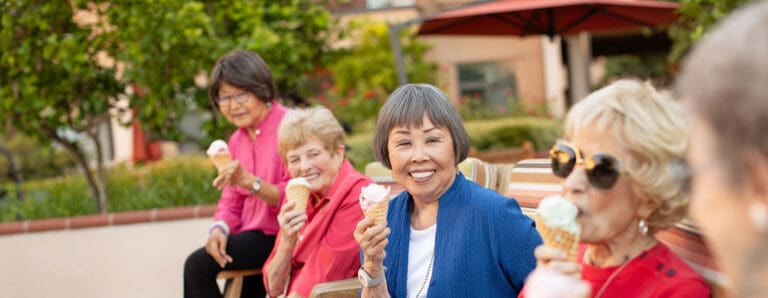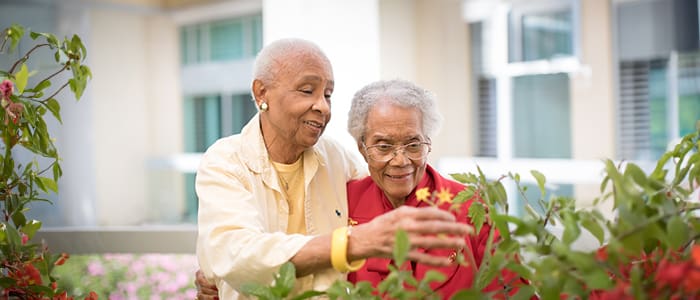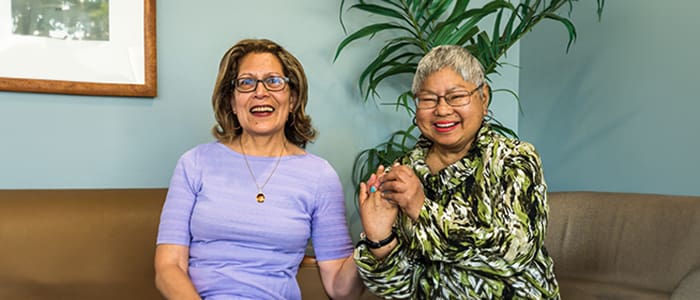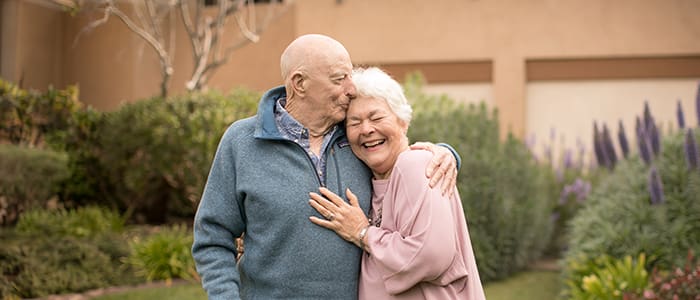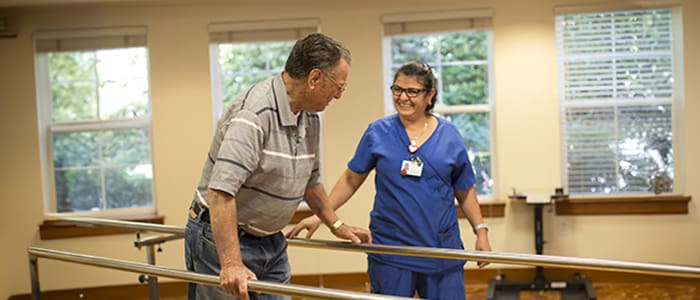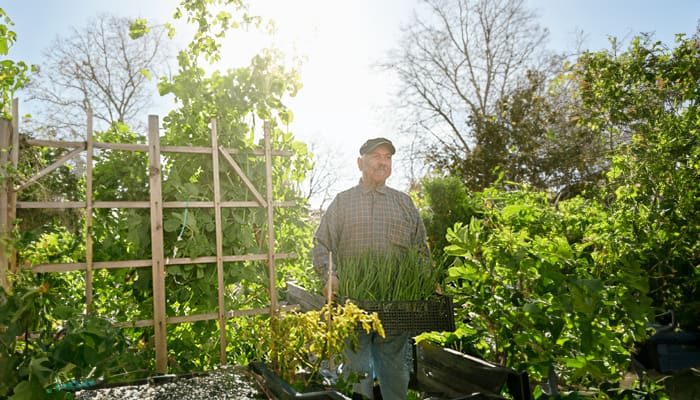August 10, 2018
Healthy Connections program benefits residents, students, and community
When Pat Lau, Activities Coordinator for Webster House in Palo Alto, first created the Healthy Connections program in 2016, she had no idea the kind of impact it would eventually have.
“I thought, ‘Oh, I’ll just have a little volunteer program. They can work with the residents, meet them, talk to them,’” she says. “But it evolved into so much more.”
Now in its third year, Healthy Connections partners with Stanford University’s Office of Undergraduate Advising to provide pre-med students with a setting to gain clinical experience as well as giving residents in the Health Center the personal connections that studies continue to show are beneficial to people’s health and well-being.
Webster House and its affiliated Health Center are located just a mile away from Stanford University. With physicians from Stanford and the Palo Alto Medical Foundation making rounds at the Health Center daily, the program offers valuable experience for students interested in exploring the medical field.
In addition, the program exposes pre-med students to the need for, and importance of, geriatrics as a medical specialty. According to the American Geriatric Society, 20,000 geriatricians are required to keep up with the need right now, and that need will only grow as the population ages. There are currently fewer than 7,300 certified geriatricians practicing nationwide.
Volunteers for the Healthy Connection program must spend a minimum of three hours each week with the residents and at least 100 clinical hours at the Health Center. “Most of the students, though, work well beyond the hundred hours and some have gone on to two hundred hours,” according to Lau.
Students must be 18 years old, pass a criminal background check, be screened for tuberculosis, and attend an in-depth orientation. “There’s a number of regulations and things they need to know about if they’re going to be in a health care setting and working with a vulnerable population such as older adults,” Lau explains, including the Health Information Portability and Accountability Act (HIPAA), patient rights, elder abuse, infection control, and safety procedures.
So far, 12 students have participated in the program. Four of the 12 students who have been through the program have been accepted to medical school.
“Everyone seemed to benefit,” Lau says. “The student was exposed to a clinical environment, but most of all, there was a very strong, caring, and reliable relationship.”
Healthy Connections recently received a Sereno Group 1% For Good grant from the Palo Alto office. 1% for Good provides grants to local organizations that are active in improving our communities. Sereno Group Palo Alto will be supporting Healthy Connections from July through September 2018.
Brian Chancellor from the Sereno Group says, ““We were intrigued and touched by the inter-generational experience between the students and the residents. It’s exciting to support them all in their care and cultivation of such a relationship when it is so greatly needed and appreciated.”
As the new school year begins at Stanford, students can anticipate another benefit of participating in the Healthy Connections program: Dr. Peter Pompei, a professor at the Stanford Medical School, general internist and geriatrician with 20 years of clinical experience, will serve as the program’s medical director, providing mentorship and support for the students.
But it’s the relationships built between the residents and students that most impresses Lau. “These students really help support these older adults. They improve the quality of their lives. And for me, I can’t tell you what I feel when I see some of these individuals smile.”
For more information on the Healthy Connections program, please contact Pat Lau at plau@covia.org.
